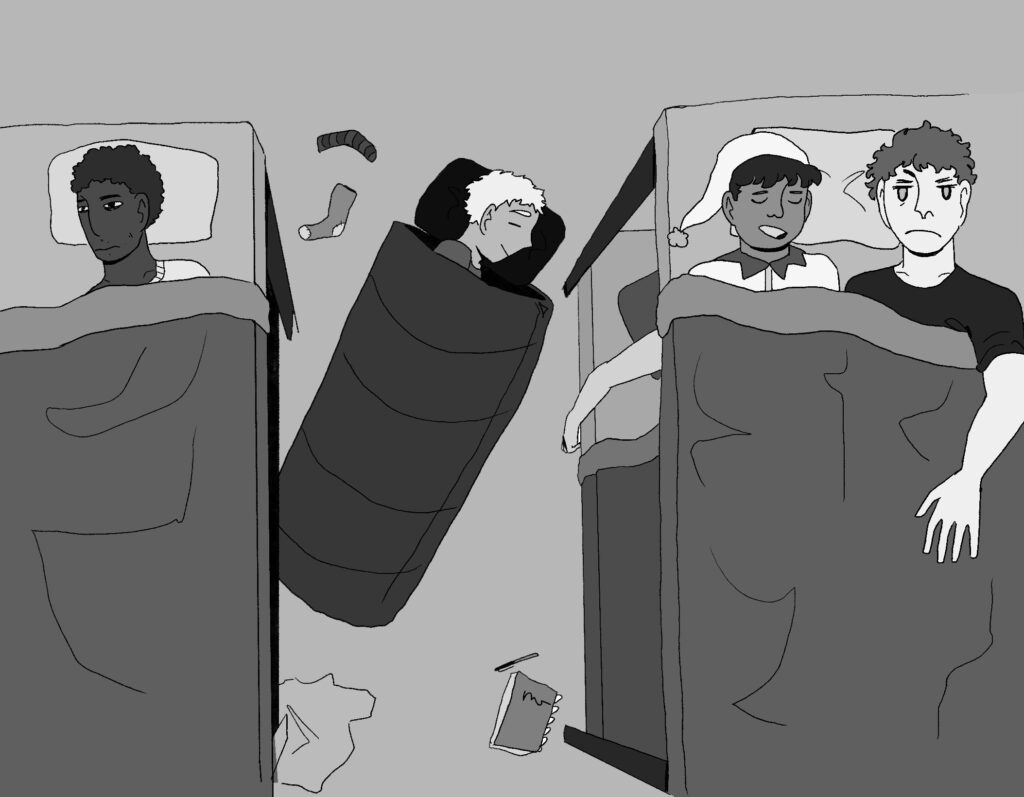
By Rose Bialk
For the 2021-22 school year, a record number of 677 first-year students (excluding transfer students) enrolled at Lewis & Clark, compared to the enrollment of 473 first-year students in 2013. Last year’s 626 first-year students was also an uncommonly high number, albeit down from the year before. Maybe this a part of a wider trend of LC incoming classes being larger in number from year to year.
The problem is that the increasing number of new students admitted vastly exceeds LC’s capacity to comfortably accommodate students. As a result, overcrowding has become a primary concern, especially for dorms and classrooms.
Last year, I began my first year at LC, excited yet nervous to experience my first year living far away from my family. With the Stewart-Odell complex closed for renovations, overflow dorm rooms and converted lounges abounded. While I was not housed in overflow accommodations, I knew numerous students who were. Their opinions about their rooms were mixed: Many were dissatisfied with the overcrowded conditions of their rooms, yet generally got along fine with their roommates.
Unfortunately, classrooms are also not spared from overcrowding. They are not well equipped to handle a growing student body, as they lack the space to accommodate the increasingly large class sizes necessitated by this growth. This has also made class registration more difficult and stressful for students as classes fill up faster due to high demand. Last year, when I registered for my Intro to Comparative Politics class, the initial maximum capacity was 20 students. However, due to the high demand for the class, 18 additional spots were added, ultimately making the classroom extremely cramped.
Since overcrowding affects our academic and residential experiences, LC needs to step up to prevent this issue in the future. I propose two solutions.
One option would be to expand the school. If LC is determined to increase the incoming class size, why not build at least one additional dorm hall or expand a few of the current dorm halls? That would help make the dorms more comfortable and less jam-packed. However, LC would also have to add more classrooms and amenities and expand essential services like Fields Dining Hall, which would be expensive and time consuming. Additionally, as a result, LC would feel less like the small school environment we sought when coming here.
If expanding LC seems too costly for the administration, keeping the school small by accepting fewer new students is another solution to prevent overcrowding. In this scenario, the school should set a maximum number of new students they could accommodate, perhaps no more than 550 new students. Unfortunately, that would result in lower acceptance rates for the incoming new students, which I understand does not feel good after all the hard work on college applications. Nevertheless, accepting fewer new students to keep the school small would be beneficial for continuing and new students as having a small school makes it easier to get to know other students and professors, thus forming a tight-knit community.
As overcrowding worsens every year, the condition of facilities, particularly dorms and classrooms, becomes more concerning. If LC wants to accept more students, the school must expand to satisfy the growing student body. If the administration is not willing to expand the school, they must reject more applicants to keep it small. Regardless, LC must step up to the growing challenge.
Subscribe to the Mossy Log Newsletter
Stay up to date with the goings-on at Lewis & Clark! Get the top stories or your favorite section delivered to your inbox whenever we release a new issue.

Leave a Reply